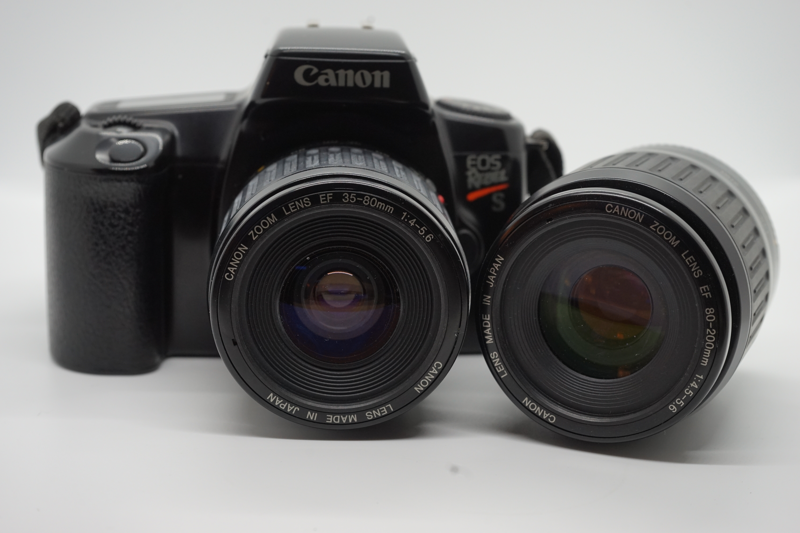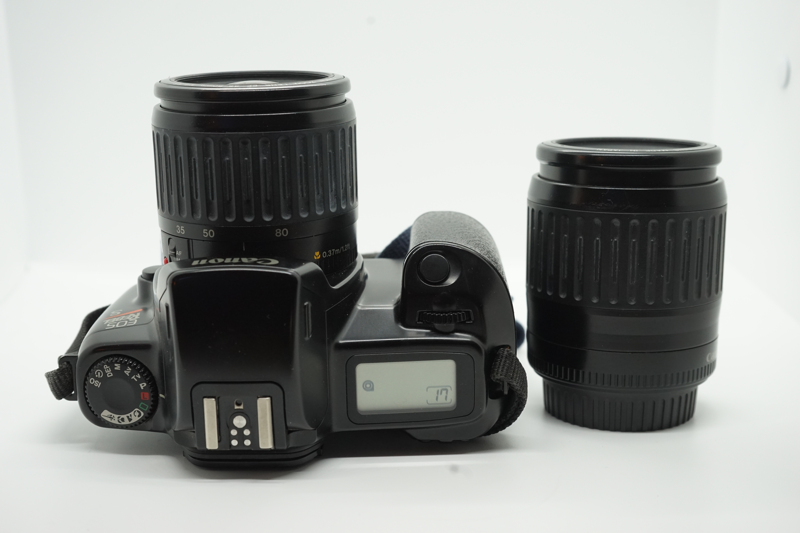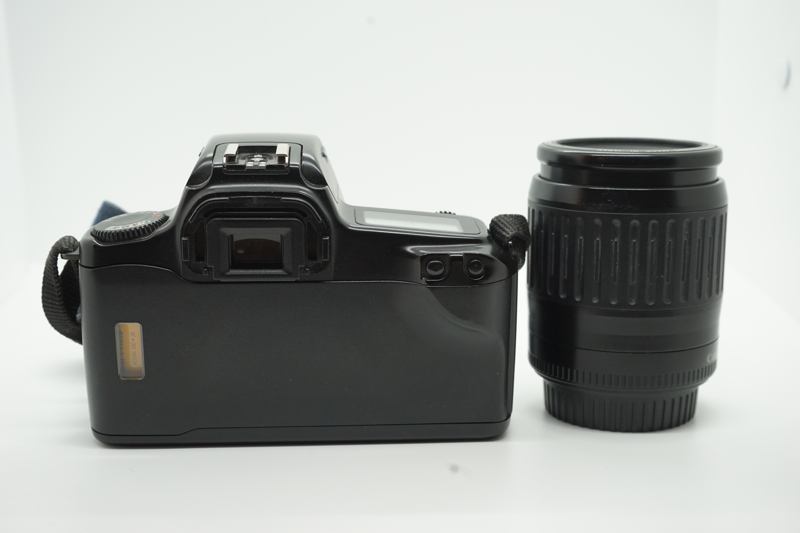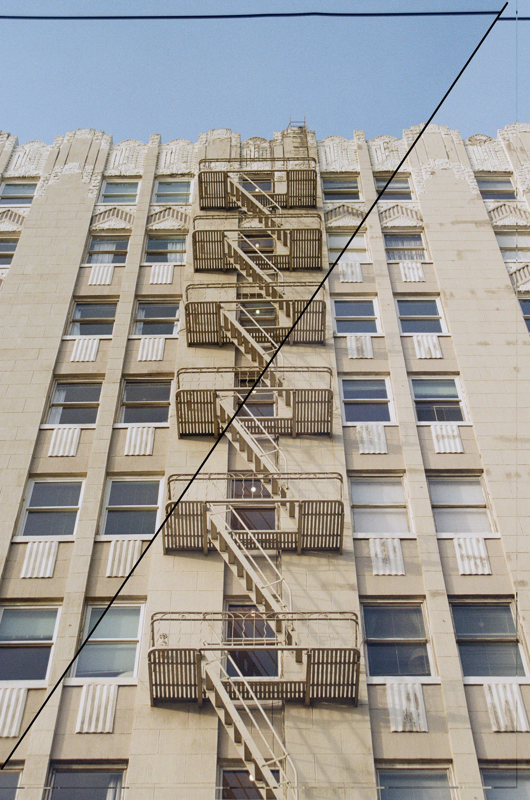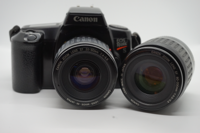
Mom's Canon Film Camera (EOS Rebel S)
February 13, 2021
This Canon EOS Rebel S replaced the Singlex SLR as our family's (aka my mother's) primary camera from the mid 90s through the end of the film era. Photos taken with this camera are in a separate post here.
When I was asking if it was still around, I actually recalled it being digital at first - it's quite sophisticated for its time. And a huge departure from the cameras I've been using (the Singlex SLR from the 60s or 70s and the Canon L1 from the 1950s).
Technological progress gives it several big advantages over the older cameras:
-
Lightweight
While does feel a bit plasticy (and it is pretty much entirely plastic), this means it weights far less than any of my other cameras. This point was one point my mother definitely appreciated lugging the camera around on family vacations.
-
Autofocus
Yeah. Works just like digital - press halfway to focus, all the way to shoot. It's shocking how quickly I take it for granted again. On the other hand, the kit lenses do not include a hyperfocal scale, so zone focusing is harder.
-
Auto mode (plus Av and Tv)
Again, you can just set it to auto and it does a good job. Oddly, I don't think you can compensate exposure in auto, but its's easy enough in aperature priority. No aperture rings on the lenses, you have to change aperture using the wheel on the back.
-
Zoom lenses
My mother had two lenses - the kit 35-80mm f/4-5.6 zoom, and the longer 80-200mm f/4.5-5.6zoom. I've mainly used the shorter lens, and it's nice to have zoom again. All my previous film work has been on 50mm or 85mm primes.
-
Autoloading and winding
After losing a few rolls early on to winding problems, I've gotten a lot better. But it still takes a few minutes of juggling to change a roll on the street. With this, you just lay the roll in, pull it out a bit to the line, and close the back. The sound that follows was described, I think aptly, in one YouTube review as "a robot trying for a minute to take a dump." But then it's done. After each frame, the roll advances automatically. And spooling the entire roll first and rewinding with each picture provides some extra protection against opening the camera mid-roll, something I've done once or twice.
Summary
I like this camera for all the reasons my mother got it: it's light, fast, and simple to use, producing good pictures reliably with little thought or effort. I've enjoyed the freedom it gives me to capture pictures where my current slower approach would cause me to miss it. And the versatility that comes from the automation and zoom lenses.
But I also find it puts me more in a digital mindframe - with auto-everything, it's too easy to blow through a roll. While the slower process is definitely limiting, it also imposes a higher treshold to what I'm willing to capture, and I appreciate that.
All said, I'm looking forward to keeping this camera in the regular rotation!
Auto mode vs my guesswork
My work to the left, auto to the right (I'm about 80% confident that's right). I think I prefer a halfstop or stop darker than auto usually produces.
I've posted some photos I've taken with this camera here.
